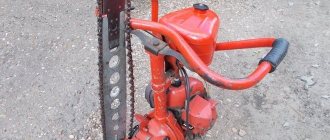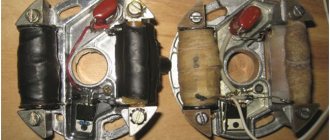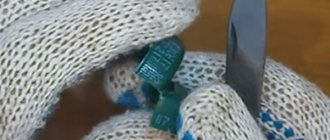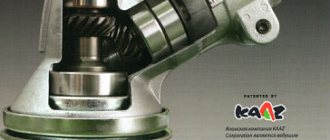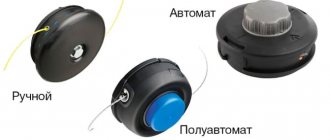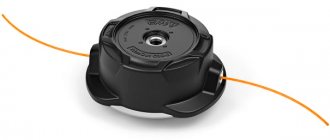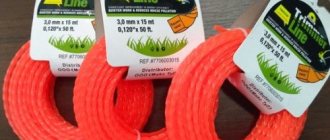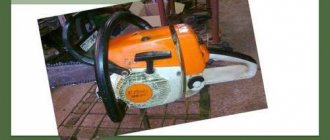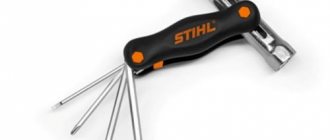How to Remove the Coil From an Electric Trimmer
How to thread the line into the trimmer?
In order for the area around the house to always look well-groomed and careful, it needs to be cut frequently. Fortunately, modern technology allows you to solve this problem without unnecessary physical effort. Electric trimmers are so easy to operate and maintain that even a child can mow the grass with them. The main thing is to figure out in advance how to thread the fishing line into the trimmer.
How to load fishing line into a trimmer?
So, we are faced with the task of correctly loading the fishing line into the trimmer. Let's take a closer look at where to start implementing it and what pitfalls may await us in the process.
Step 1 - choose fishing line
At the very first step, you need to choose the right fishing line. Although at first glance all the fishing line sold on the market or in a store is not much different from each other, you should not take it thoughtlessly. In order not to make a mistake in your choice, it would not be superfluous to take with you a package of used fishing line or a small piece of it, or at least write down the model of the trimmer. How to disassemble the trimmer coil. How to replace and remove an electric trimmer. An ideal option for virtually all models of trimmers would be a fishing line 3-4 mm wide.
Step 2 - remove the coil from the trimmer
To perform this operation, the trimmer must be unplugged and turned upside down. The upcoming course of action depends on the trimmer and the design of the reel itself:
- for small trimmers with a bottom-mounted engine, press the buttons located at the edges of the coil and remove its upper part from the head;
- on trimmers with a bent rod, we clamp the coil body with one hand, immediately turning the thumb located on the body counterclockwise;
- For trimmers with a straight rod and gearbox, insert a screwdriver into the hole located under the coil, and then turn the coil body counterclockwise.
How to replace and remove the mowing head of the Black&Decker GL716 electric trimmer
How to change, remove
mowing head of the BlackDecker GL716 electric trimmer for repair or replacement.
How to remove and install the reel on a lawn mower!
Subscribe to the channel! And we will teach you everything)))
Step 3 - disassemble the coil
After the coil is removed from the head, it must be carefully disassembled. It is better to do this on an already mowed area, because there may be a spring inside the coil, which will be quite difficult to find in the tallest grass. Electrical circuit of a trimmer with half an electric trimmer. As you are convinced. After disassembly, we will have three parts on our hands: the body (top cover), the protective casing and the coil itself.
Step 4 - measure out the required amount of fishing line
Beginner mowers are usually interested in how many meters of line to wind on the trimmer reel ? This issue can be resolved in two ways:
- Unwind a skein of fishing line on a flat, dry place and separate half of it.
- Measure 3-4 meters of fishing line from a skein.
In any case, after winding is completed, the turns of the fishing line should be on the body of the reel, without slipping off it. There is no need to try to reel in as much as possible, as the line will unwind poorly and more often break.
Step 5 - wind the fishing line onto the reel
How to install the line on the trimmer depends on the design of the reel. Let's consider the option when the reel body has one outlet for the fishing line. In this case, we clamp the end of the fishing line in the crevice of the reel, and then wind the fishing line, trying to lay the turns as tightly as possible. The direction of laying the turns should be opposite to the direction of rotation of the coil and is usually indicated on its inside. After winding is completed, you need to put a protective casing on the reel and bring the end of the fishing line into it
If the reel is designed to work with two tails, then the fishing line must be folded in half and placed in the groove in the central part of the reel. Further winding will be carried out along one or two grooves, depending on the design of the coil. The direction of winding should also be opposite to the direction of rotation of the coil . At the end, the tails of the fishing line will also need to be brought out into the holes on the top of the reel.
Determining the amount of winding
When it comes to the question of how to wind fishing line onto a reel, for beginners it is difficult to determine the amount of winding. It can only be installed experimentally. Experienced fishermen advise proceeding in the reverse order.
If there is a second similar reel , you need to wind the fishing line onto it first, and then the winding tied to it. In this case, you should remember the basic rule: you can wind the fishing line correctly on a spinning reel only if the level of its top layer does not exceed 3 mm from the side of the spool. After this, you should rewind the thread to the main shul, starting with the backing, which, as expected, will be at the bottom.
If there is no second reel of the same type, the measurement is made on the main reel. Then the fishing line is unwound and re-wound on it, starting with reeling.
The line sticks together
the fishing line during operation , the main reason is the installation of low-quality cord. During operation, the reel heats up, and the low-quality string melts and sticks together. The second reason is the collision of the cord with solid objects. At the same time, it suddenly slows down, the thread is pulled into the head and becomes stuck.
So, replacing the line on the trimmer is not difficult if you know how to disassemble the reel and wind the cord. This process is similar for equipment of different brands. A detailed description can be found in the operating instructions for the tool or watch the video.
The fishing line flies out
If the string flies out when mowing, this is another indication that the spring in the bobbin has weakened or was completely lost due to careless disassembly of the head. As a result, the cord does not hold and jumps out when rotated.
Lawn (garden) trimmer: how to remove the head, replace the fishing line, install a hedge trimmer
Home page » Lawn (garden) trimmer: how to remove the head, replace the fishing line, install a hedge trimmer
A tool for household purposes, such as a lawn (garden) trimmer, has been actively used in practice. Technically, this type of machine is considered a completely familiar device. Traditionally, brush trimmers and string trimmers are based on a standard internal combustion engine system. True, electric models are increasingly appearing on the market. However, let's consider the first option in terms of maintenance.
Lawn (garden) trimmer – maintenance
Regardless of the type of automated scythe drive, the cutting part of such a device is usually represented by a common trimmer head design. In general, the equipment may contain the following components and blocks in its structure:
- main unit (gasoline or electric drive),
- operator handle,
- trimmer head,
- head with nylon cutting line (diameter 2.5 mm),
- supply of nylon fishing line (usually 2.5 - 3 meters),
- steel cutter brush cutter with 3 teeth and 8 teeth.
Additionally, a kit for a lawn (garden) trimmer usually includes working accessories. It also includes the necessary tools, as well as other components, the use of which is required by operation and maintenance operations:
- safety belt,
- gloves,
- protective face shield,
- anti-noise headphones,
- set of working tools,
- spare spark plugs,
- container for mixing oil.
When using a string trimmer for cultivating a lawn or another, the engine must be refueled periodically. In addition, as household work is carried out - cutting grass and bushes, it may be necessary to change the working head of the brush cutter. Or replacing the fishing line on the trimmer in the impact head.
How to install and remove the string trimmer head?
To install the impact head with nylon trimmer line (for cutting grass), you need to follow a few simple steps.
- Unscrew the shaft stud lock nut (clockwise),
- Remove the nut-retained cup and clamping plate.
- Use a hex wrench (included) to lock the shaft.
- Screw the trimmer impact head with nylon fishing line onto the shaft stud (counterclockwise).
- Remove the locking hex key.
The removed nut and clamp washer must be kept in a safe place, since these parts are not used if the impact head with fishing line is installed on a lawn (garden) trimmer. However, these parts are needed for fastening cutters intended for cutting bushes.
Sequence of installation - removal of an impact head with a nylon fishing line on a string trimmer, intended for cutting grass in commercial areas
Accordingly, removing the working impact head of the trimmer with nylon fishing line to remove lawn grass is performed in the reverse order.
The above operation of installing and removing the impact head of a nylon line trimmer, in fact, requires consideration of another maintenance operation, due to which the line in the lawn (garden) trimmer is replaced.
How to change nylon line on a trimmer?
To fill the impact head of a lawn trimmer with nylon fishing line for cutting grass, the impact head must first be removed from the drive shaft and disassembled.
Final point of instructions
Typically, the process of replacing fishing line on a trimmer of a particular model is popularly described in the accompanying documentation. Another issue is that this documentation is often supplied in a foreign language, since the notorious lawn mowers for the most part are imported products.
Meanwhile, there is a much simpler, more economical and beneficial way for human health and nature - tidying up lawns with an ordinary peasant scythe. Scythe Blade:
- does not “tear” grass stems,
- does not uproot plants,
- cuts carefully
which is subsequently accompanied by abundantly growing greenery, and not the formation of dead wood as a result of the work of a trimmer.
Using materials: SGS-Engineering
How to choose a fishing line - length, diameter, restrictions
IMPORTANT TO REMEMBER! Do not use fishing line or metal cables for the trimmer. Such a replacement is ineffective and dangerous. The cable can injure not only the mower himself, but also those around him.
As for the length, you should count on the expected frequency of use of the trimmer. The more often, the more consumables it costs to stock up.
Information about the possible diameter of the fishing line can be found on the body of the trimmer reel. Most likely, the range will be indicated there. Thickness varies from 1.2 to 4 mm. Choose the appropriate option, taking into account the characteristics of the area being treated. The larger the diameter, the easier it is to cut tough grass.
Preparation - remove and disassemble the spool
In most models of electric and gas trimmers, you will need to remove the spool to change the fishing line. The FUBAG tool (electric trimmers and gas trimmers) allows you to skip this step. To make the instructions universal, we will still look at it in detail:
1.
Lock the shaft. Insert the locking element into the corresponding hole. It can be a thin screwdriver or a metal rod.
2.
Unscrew the spool housing. In our example - strictly in a clockwise direction.
3.
Unscrew the cap in accordance with the direction indicated on the housing.
4.
Take out the winding spool.
The preparatory stage has been completed. You can proceed to winding the fishing line.
Reel care and damage prevention
Prevention of poor performance of an inert coil begins with careful handling of it: storage and transportation should be carried out only in special cases. This will protect against external mechanical damage. In addition, exposure to ultraviolet radiation has a negative effect on fishing line.
Be sure to lubricate the mechanism when it is wet in the rain or when the reel falls into water. Very often, bearings wear out from dry operation, and their replacement will cost 20-25% of the cost of the entire fishing device.
Closing the season, it is also necessary to carry out maintenance of the reels.
For preventive measures, you will need the assembly instructions that come with the brand's inert spinning machine. In addition, you will need some tools: screwdrivers, a set of tweezers, brushes, cotton swabs, gasoline for lighters (can be replaced with white alcohol, alcohol or ether), lubricants: liquid oil for external elements and thick oil, which will be necessary to process parts with complete disassembly of the coils.
How to wind line on a trimmer reel
Winding algorithm
2. Insert the resulting loop into the groove.
3. Lay the line in accordance with the direction indicated on the element body.
4. Insert the short end into the groove on the side of the reel.
5. Secure the long end into the opposite slot.
6. Place the spool with the line wound into the spool body.
7. Pull the line out of the fixing slots.
8. Put on the cover and secure it.
9. Trim the ends of the fishing line, leaving 10 to 15 centimeters.
The replacement of the fishing line is completed and now all that remains is to screw the spool onto the trimmer and you can work.
ATTENTION! Typical problems with fishing line
It’s not for nothing that they say: “ Forewarned is forearmed.”
" Knowing about possible problems and the causes of their occurrence, you can prevent them in a timely manner. We recommend that you remember or leave a reminder.
| Problem | Cause | Solution |
| Line break | Stones, branches and hard objects in the grass | Avoid collision |
| Poor cord quality | Replace with a high-quality analogue | |
| Wear of the outlet holes in the head | Complete part replacement required | |
| The fishing line unwinds | The spring in the coil is weakened | Check the spring and replace if damaged |
| The line sticks together | Low quality fishing line, due to which it can melt under the influence of temperature from the heating head | Reel in less fishing line or replace with better quality consumables |
To better understand the mechanism of the process of replacing line in the spool, we recommend that you familiarize yourself with the video guide prepared by FUBAG specialists:
The importance of proper winding
In order for fishing to be successful, you need to carefully prepare for it. Otherwise, “terrible things can happen” - the weather is fine, the bite is excellent, but the gear constantly malfunctions and prevents you from taking advantage of favorable fishing conditions.
To prevent this from happening, you need to set up all fishing accessories in advance. One of the most important stages of preparation for fishing is the correct winding of the fishing line on the spool of the fishing reel. Failure to follow the basic rules threatens the would-be fisherman with tangling and broken fishing lines, and fishing will become a test for the nervous system instead of pleasure.
The casting distance depends on the quality of such work. Correct winding ensures that the bait is cast at a distance that maximally corresponds to the technical characteristics of the reel.
In addition, high-quality winding extends the life of the line, reducing mechanical friction and reducing the risk of “beard” when casting, which is why it is often necessary to cut the line. Therefore, before starting work, it is necessary to consider a few tips from experienced fishermen on how to lay the fishing line on the spool. This is a fairly simple procedure that even a beginner can handle.
Replacing fishing line in a trimmer: 2 simple ways
A trimmer is a necessary and useful tool for a summer cottage and a private home. Many people own and actively use it, but not everyone knows how to replace the line in a trimmer, especially at first.
In this instruction we will walk you through the entire replacement process step by step. Looking ahead, there are two ways to thread a trimmer spool with line. There is no fundamental difference - the difference is that in the first case there will be one line folded in half, and in the second there will be two sections of such lines.
Content:
Winding profiles (taper)
For different reel models, the turns of line on the spool are applied differently. In high-quality products, cylindrical and conical winding methods are used. The line laid in profile forms an even line. With cylindrical winding, this line is straight, parallel to the spool; with conical winding, it is inclined.
The straight cone shape tapers towards the front edge of the spool, the reverse cone shape widens. The straight taper reduces line friction. The reverse type of laying reduces the likelihood of spontaneous line release.
There is a third type of winding - chaotic. Typically used in cheap Chinese fishing rods. And if such winding can still be tolerated using regular fishing line, then you should refuse to use a cord in such a reel. Poor casts, beards, overlaps and tangles are guaranteed. This leads to failures in fishing and can also ruin the mood of every fisherman.
READ How to Insert Line into Partner Trimmer
Preparing for replacement
Disassembling the trimmer spool
For clarity, the mowing head (spool) was removed from the brush cutter. There is no need to remove the fishing line to replace it; everything is done locally. It doesn't take much time.
We disassemble the trimmer spool - it is held on by latches. Remove the cover by pressing the latches. If there is not enough effort to do this with your hands, then use a screwdriver.
The spool consists of the following:
- Housing with spring
- Cover with locking latches
- Reel with button
The operating principle is as follows. By pressing the button, the reel presses on the spring and comes out of the fixing grooves in the spool cover. By holding the reel in this state, you can twist it, thereby adjusting the length of the fishing line. When the button is released, the housing spring returns the coil to its original fixed state.
Disassembled trimmer spool
There are several holes on the bottom of the reel for different diameters of lines. These may differ between trimmer manufacturers. In some cases (like here) they are signed, in others they are not.
These holes are needed to fix the fishing line when replacing it. After winding the fishing line around the bobbin, the ends of the latter are inserted into them. This is necessary so that the line does not unwind when the reel is installed in the trimmer body. In other words, it makes line changes easier.
Holes for fixing fishing line
There are models without indicating the diameter of the consumables. Then, in order to find out what maximum diameter of the line can be used, it is tried on using the holes for the line exit from the trimmer spool body (see the figure below).
Trying on the fishing line exit holes
The reel has two sections for fishing line, separated by a partition. They may not exist. They are needed only to differentiate and facilitate winding of consumables.
Two sections for fishing line
First, the required length of the loess is determined. The latter is wound into one of the sections of the coil so that it does not extend beyond its limits. In this case, 3 mm was wound, the length turned out to be about 2 meters. Those. for two sections you will need a 4 meter piece - this is for the 1st method. For the second method, you need two pieces of 2 meters each.
Determining the required line length
Now you need to figure out which way you need to wind it. To do this, many manufacturers of trimmers put special markings on the reels, such as in the figure below.
Special marking on the reel
If no such markings were found, then you need to pay attention to the spool body. There must be an arrow there that indicates the movement of the mowing head. The line is wound in the opposite direction.
Designation on the spool body
First way
Line bent in half
The prepared segment (in this case it is 4 meters) is bent approximately in half - one segment should be 15-20 cm longer, and is inserted into a special slot located on the dividing partition.
The fishing line is inserted into the slot
The fishing line is wound in the previously determined direction. This is done under tension, the line is carefully distributed. In this case, you need to wind the segment that is longer into the section that is closer to the button.
There are designs that do not provide for dividing the coil into two sections. This does not change anything, the fishing line is wound in a similar way. You just need to make sure that the segments do not overlap each other.
The segment that is located at the bottom of the coil should end first, i.e. the one closest to the fixing holes.
This tip is placed in a hole of the corresponding diameter. The line is securely fastened.
The line is securely fastened
The long piece is wound another half turn. There it is similarly fixed. In this case, the segment intersects another section of the coil.
The long piece is wound another half turn.
The fixed ends of the wound fishing line are inserted into the holes in the trimmer spool body.
The fixed ends of the wound fishing line are inserted into the holes in the trimmer spool body
The coil is attached to the body. The ends of the fishing line are pulled up with force so that the fishing line previously fixed in the holes of the reel of the fishing line jumps out. This is easily determined by the characteristic sound (click).
The ends of the fishing line are pulled up with force
The reel with the button is snapped into the trimmer spool body.
The reel with the button is snapped into the trimmer spool body
The line replacement was completed successfully. In this case, you need to install it back on the trimmer and you can start cutting the grass.
It should be repeated that there is no need to remove the spool from the trimmer - this was done to illustrate the process of replacing the fishing line. You can disassemble the spool in place, wind it onto the reel and put it back.
Line replacement completed successfully
The ends can and should be trimmed so that they do not hit the trimmer casing.
Method 2 – two segments
Two spooled lengths of fishing line
Method No. 2 is fundamentally no different from method No. 1. The only difference is two reeled pieces of fishing line, instead of one.
The end of each segment is bent
The end of each segment is folded over.
Two special fixing sockets
There are two special fixing sockets on the reel (see picture above).
We begin to reel in the fishing line
They hook the hook formed earlier on the fishing line to it, and begin to wind the fishing line.
Winding is carried out in a special order
Winding must be carried out in the following order: first, the lower line, i.e. the one that is closer to the fixing holes on the bottom of the coil, and only then the top one, i.e. the one that will overlap the lower section.
The bottom line is wound
The tips are made into the holes in the trimmer spool body. They are pulled until they click, which indicates that the line has come out of the clamps.
The tips are threaded into the holes in the trimmer spool body
The coil is fastened into the housing. The line in the spool has been replaced.
The line in the spool has been replaced
VIDEO: How to wind fishing line onto the mowing head of a trimmer or brush cutter
How to wind fishing line onto the mowing head of a trimmer or brush cutter
Replacing fishing line in a trimmer: 2 simple ways
Feedback from our readers is very important to us. Leave your rating in the comments with reasons for your choice. Your opinion will be useful to other users.
Winding thread by hand
You will also need to consider how to wind the line onto the reel by hand. If a fisherman has a telescopic spinning rod, it needs to be unfolded into working condition. This is not necessary for a plug rod; you can work with its lower part.
The reel should be secured in the reel holder. in the reel on which the fishing line . A rod is inserted into it, which can be used as a pencil, pen, knitting needle, etc. If the fisherman has an assistant, he will hold the axis on which the bobbin will unwind. If you don’t have an assistant, you can hold the rod between your knees yourself.
There are special devices on sale for unwinding fishing line from a reel. Their advantage is that they regulate the force when winding the fishing line and make it uniform.
The fishing line is threaded through the rings, from the smallest top element to the reel. The thread is then secured in the spool with the line guide open. After this, it is lowered into the working position. You can start winding the line by rotating the reel.
Types of semi-automatic heads
A semi-automatic mowing head usually consists of a housing, inside of which there are several springs and a spool. Spools, according to their design, are divided into:
- single-section – in devices of this type, the cutting line used is wound evenly;
- two-section – in these spools, each end of the cord must be wound separately, onto the part intended for this. Two-section spools differ from single-section spools in durability and ease of operation. In addition, the fishing line inside them never bends or gets tangled.
Many owners of household trimmers convert single-section spools to two-section ones. To do this, you will need to find a durable metal plate and apply a contour with the diameter of the spool on it. After this, the plate is cut along the contour so that the thickness is near the place where the cord is wound. As a result, the resulting circle should move freely around its axis. Next, you will need to make a cut on the resulting ring and insert the spool inside the ring. Both parts must be connected to each other using tape or quick-drying glue. As a result, the manufacturer will have a spool in which the line can be wound into two sections.
Classification by cord charging method
Another important factor is the principle of loading the line into the mowing head. Due to this factor, the following types of coils are found on the market:
- fast - to charge this type of device, the operator using it does not need to remove the headset from its base. In this case, it is enough to carefully insert the cord to the center of the reel and wrap it around the base several times. It is convenient and, moreover, saves a lot of time;
- collapsible – to replace the cord, reels of this type will need to be disassembled. Beginner gardeners may have problems with this procedure, however, having gained the necessary experience, charging the head will proceed much faster in the future.
As practice shows, a fast trimmer reel is best for a novice gardener. It is durable and can be actively used in areas with a large number of hard obstacles.
Typical problems - causes
Malfunctions that most often occur with the magnet are typical for trimmers from different manufacturers. As a rule, this is a weak spark or its absence, as well as interruptions in this process.
Unstable sparking
If the magnet flashes periodically, check the contacts first. They may be burned or greasy. Detected carbon deposits are cleaned with a file, and the oil is wiped off with chamois leather pre-soaked in gasoline. The second possible cause of the problem. Incorrect registration. Gap between contacts. To fix this, you need to set the correct distance.
If the spark appears intermittently, it may also mean that the shift lever cover is worn. To troubleshoot, replace the lever with a new one. In addition, the gap should be adjusted as with any other possible cause of failure. Adjust the contour.
Making your way through the capacitor can also cause interruptions in spark formation. In this situation, the damaged part must be replaced as it cannot be repaired and charged.
No sparking
If the magnet does not emit sparks at all, the main reason is a break in one of the transformer circuits (primary or secondary). To repair a hedge trimmer, replace the faulty part. If this happens to be a short grounding of the primary circuit, this can also cause a lack of spark. You must fix this to solve the problem.
Insufficient sparking
A weak spark on the magnet is caused by a damaged capacitor. To eliminate the malfunction, it is necessary to replace the faulty part.
Types of reels according to their correspondence with lawn mowers
In addition to the methods of charging and feeding the cutting cord, mowing sets are divided among themselves according to their compliance with different models of trimmers. The following reels are available for sale:
- original – suitable only for certain models of brush cutters. It will not be possible to use them for installation with other trimmers due to mismatched threaded connections;
- universal – these models can be installed on any lawn mower. A universal reel costs a little more, but it can be used alternately by several owners of different lawn mowers.
Most often you can find original coils from the brands Stihl, Husqvarna, Oleo-Mac, and Echo on sale. In turn, universal mowing sets are produced by Champion, Shindaiwa, and Partner.
How to install a coil on a trimmer?
Not only the quality of the cut, but also the safety of the operator during operation of the brush cutter depends on the correct installation of the cutting set.
When installing the coil, you must adhere to the following procedure:
- First, you need to fix the shaft of the standard gearbox of the lawn mower. To do this, you need to align the hole in its body and the driven disk;
- Next, you will need to install a metal pressure disk on the gearbox shaft;
- Then you need to screw the head with the fishing line onto the shaft, rotating it counterclockwise;
- To remove the coil from the trimmer, you will need to perform all the steps in reverse order.
